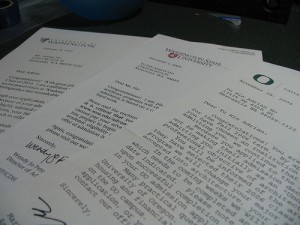
Columbia University, ranked in the top 10 by some measures. Creative Commons photo by Flickr user Barbara (Jorbasa)
In recent weeks, as they do about this time each year, several publications have attempted to crown the best university in America.
So what is the best university in the country? The answer’s not quite so simple. In fact, just about the only thing these rankings agree on is that they really don’t agree what America’s best university is. U.S. News and World Report picked Harvard University and Princeton University to tie in the number one place, while the Times Higher Education World University Rankings placed the California Institute of Technology in the number one spot, sticking Harvard at number four and Princeton down at number six.
Washington Monthly’s rankings give the University of California – San Diego the win, with Princeton, Harvard, and Cal Tech nowhere to be seen in the top 10. And while Forbes Magazine followed U.S. News in selecting Princeton as its number one school, its number two school is Williams College – a school that doesn’t even appear on any of the other rankings.
(Scroll to the bottom of this article to see all the top 10 lists)
How useful are rankings then, if they can’t even agree on a top contender?
Read the rest of this entry »




 Kanyakrit (Yu)
Kanyakrit (Yu) Don't Study in the US: A Look at the Pros and Cons
Don't Study in the US: A Look at the Pros and Cons 5 Stories That Might Change How You See the World
5 Stories That Might Change How You See the World Disability, Difference and Left-handedness in China and America
Disability, Difference and Left-handedness in China and America What Does it Mean to "Be American" as a Chinese Student?
What Does it Mean to "Be American" as a Chinese Student? The Best Advice I Ever Got for Writing in English: ‘Treat the Professors Like Idiots’
The Best Advice I Ever Got for Writing in English: ‘Treat the Professors Like Idiots’ Student Visa Tips From Visa Officers
Student Visa Tips From Visa Officers What Americans Think When They Hear Common English Mistakes
What Americans Think When They Hear Common English Mistakes How I'm Going to Get into Medical School as an International Student
How I'm Going to Get into Medical School as an International Student Why You Will Gain 10 Pounds in America (and How to Lose it Again)
Why You Will Gain 10 Pounds in America (and How to Lose it Again) First Steps: What to Do if You Want to Study in the US
First Steps: What to Do if You Want to Study in the US